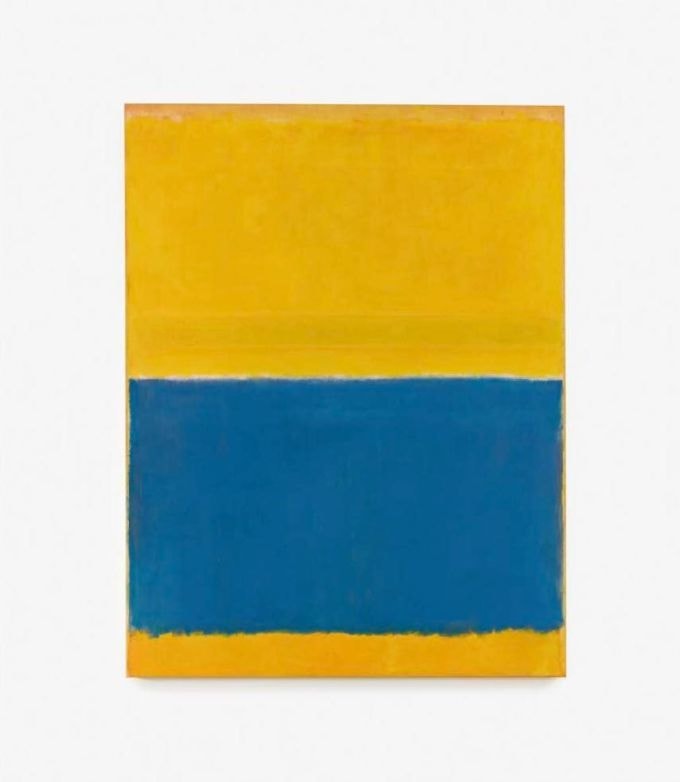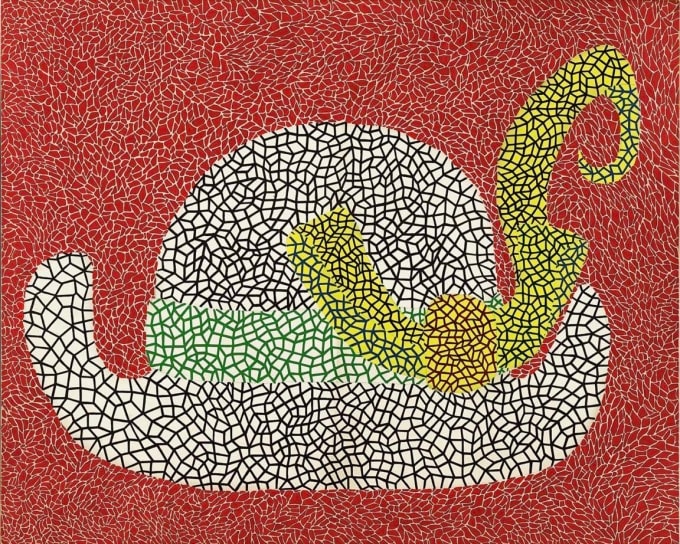A work consisting of two yellow and blue streaks by artist Mark Rothko was auctioned for more than 252 million HKD (824 billion VND).

Untitled (Yellow and Blue) fetched the highest price at Sotheby's Hong Kong's Modern & Contemporary Evening Auction on November 12, within the expected price range.
Oil on canvas, measuring 242.9 x 186.7 cm, once in the collection of François Pinault - a French billionaire businessman, is also the first work by Mark Rothko to be sold in Asia.
The work was created in 1954, when the artist was at the height of his career. The two brilliant colors, both separate and intertwined, evoke the image of a blue ocean pouring into the surrounding golden fields, according to the auction house.
The auction house quoted Mark Rothko in The Romantics Were Prompted: "I think of my paintings as plays, the shapes in which are the actors."
The company commented on the workmakes the audience feel like they are enjoying a vivid play and calls it "an important masterpiece in the history of 20th century art".
Mark Rothko (1903-1970) is famous for his color field art style. His paintings consist of unevenly stacked rectangular patches of color.
According to Arthive,Rothko's work required a lot of techniques, not just the "few streaks of color" that people see. Research using electron microscopes and ultraviolet rays showed that the artist used some natural ingredients such as eggs, rabbit skin glue and artificial ones such as phenol formaldehyde glue, alkyd paint to make the color dry quickly, easy to paint on new layers.
Rothko's works have increased in value in the decades since his suicide. Orange, Red, Yellow (1961) fetched $86.9 million at Christie's in May 2012. Number 1 was hammered for $75.1 million by Sotheby's New York in November 2013. Number 7 was sold for $75.1 million in November 2022.$82.4 million at Sotheby's New York.
Also at the Sotheby's Hong Kong auction on November 12, the second most expensive work was Hat by Yayoi Kusama. The painting fetched 43.8 million HKD (about 142 billion VND), created by the artist in 1980, and once belonged to the collection of Dr. Ryutaro Takahashi.

Sotheby's described the painting as "brilliant, gorgeous, and lovely," depicting a large hat against a grid pattern. According to the auction house, Hat is Kusama's first canvas featuring a hat and has never been exhibited before.
The artist grew up in a farming family in Japan and was accustomed to wearing straw hats. In 1960s New York, she often wore boldly patterned hats to exhibition openings and shows.
After completing Hat, she continued to explore the subject, creating many prints and paintings. Therefore, the painting not only bears the artist's personal mark but also marks an important stage in her career.
Yayoi Kusama, 95, is a Japanese artist known for her polka dot style. As a young woman, she was looked down upon by gender stereotypes in her home country and was not highly regarded by the domestic art community. The author came to the United States in 1958 because she could not find a way to develop her art in Japan and returned to her homeland in 1972.
According to Artnews, Kusma is recognized as one of Japan's most important living artists, with many of her polka dot paintings selling for millions of dollars. In 2006, she received the National Prize for Lifetime Achievement.
TB (according to VnExpress)